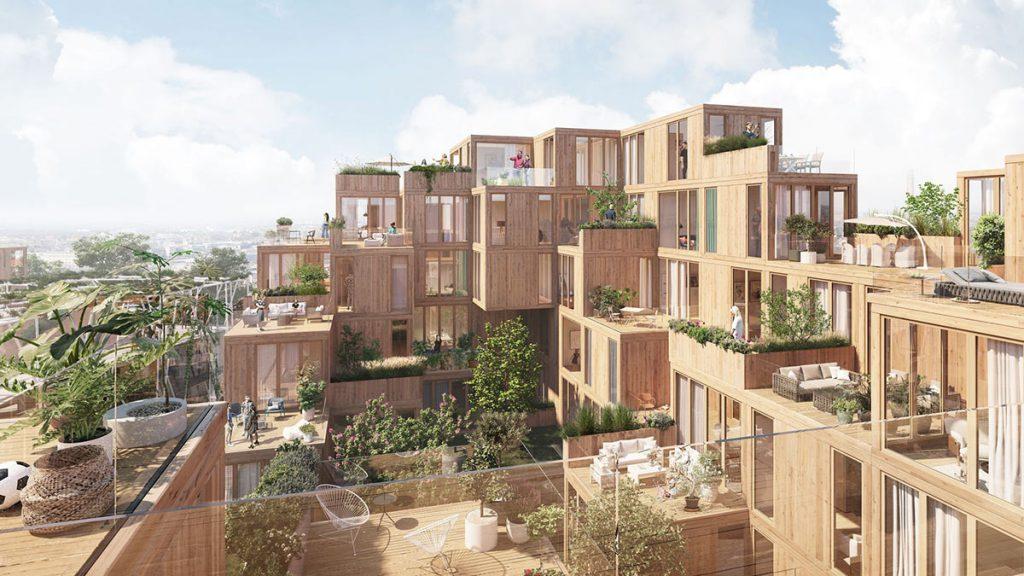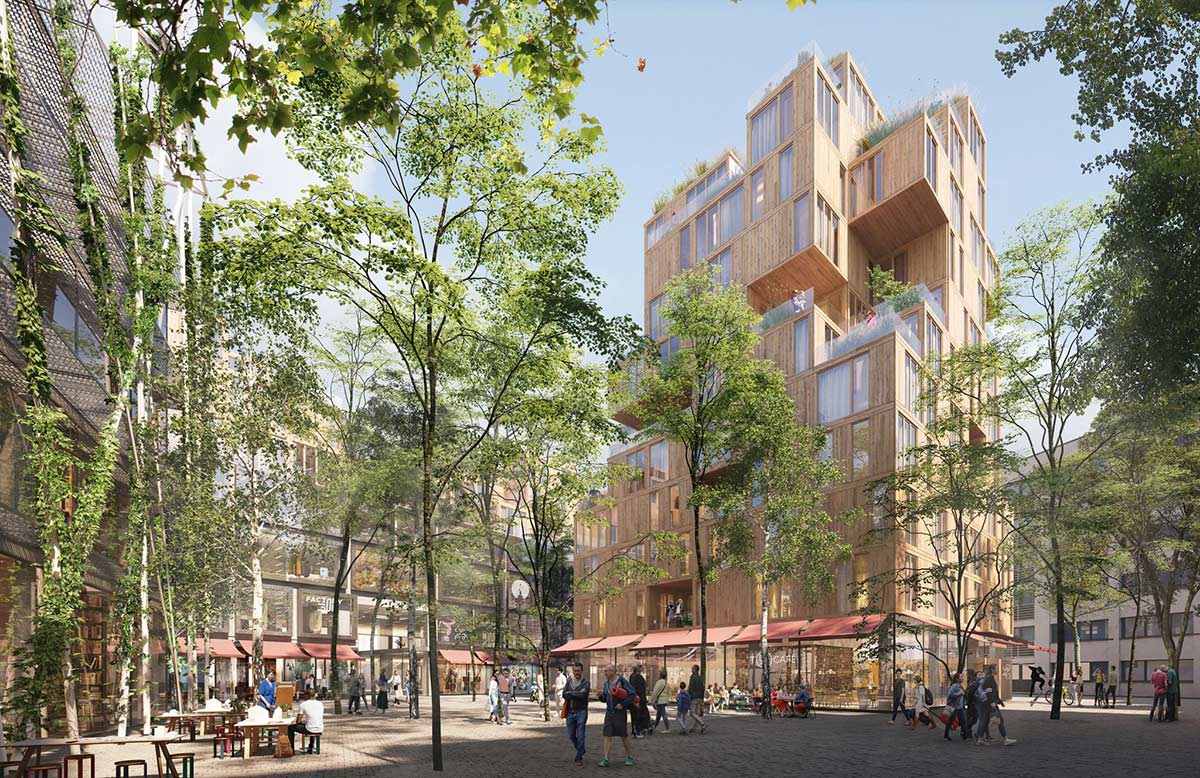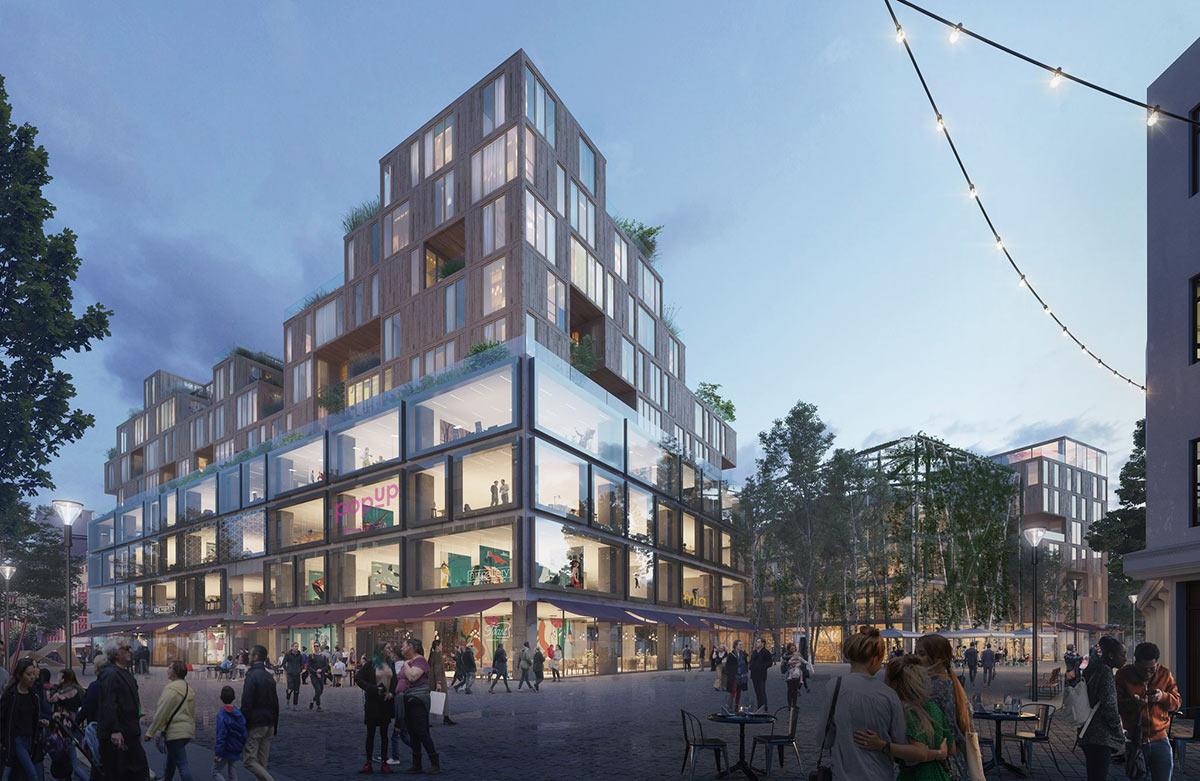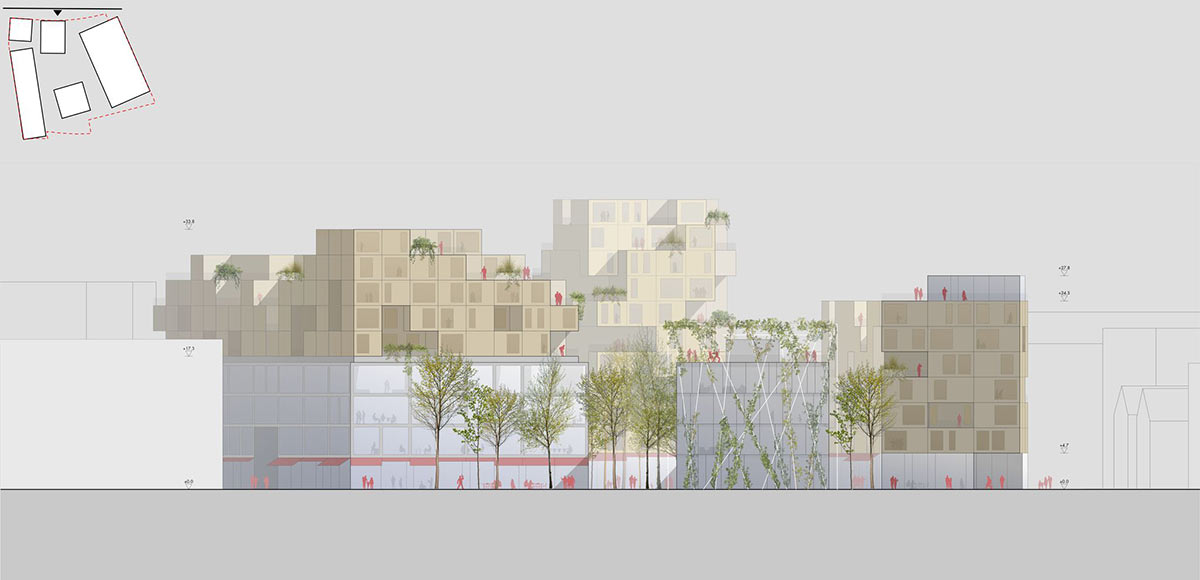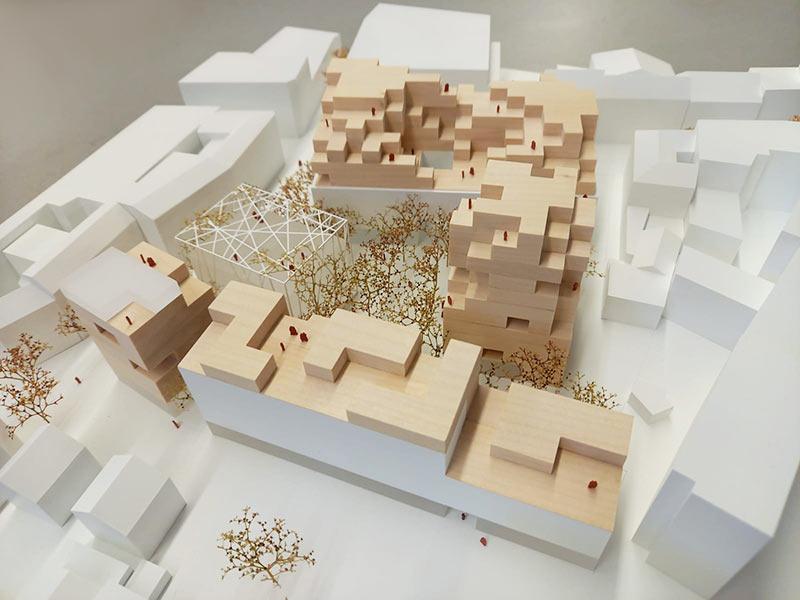Redensification with timber
A competition entry submitted by architectural office Querkraft in Vienna shows the role that timber can play in increasing urban construction density. With extensive soil unsealing and greening, it also helps to create a cooling urban woodland in a Bielefeld district.
Widespread soil sealing, huge thermal masses and hardly any vegetation at all – this was the urban diagnosis and the starting point for a new district development in Bielefeld. However, the problem is a generic one that also applies to countless other cities and that, given the general rise in temperatures, calls for new solutions. After all, the urban development parameters of tomorrow’s cities need to be reworked now if people are still going to be able to live there. A competition entry designed by architectural office Querkraft in Vienna serves as a blueprint not only for Bielefeld but for future cities in general.
Strategies to counteract heat islands
Today, the negative effects of climate change can be felt above all in large cities. In urban areas with extensive sealed surfaces, “heat islands” are formed in hot weather, which can take its toll on the health of the people who live there. Strategies for reducing heat stress in cities are being developed as part of the EU project Urban Heat Islands.
Here, certain factors have a particular influence on the microclimate. These include construction density, traffic volume, green spaces, ponds and the heat generated by heating, machines and factories. Project development company Aachener Grundvermögen launched its own architectural competition with a view to transforming a Bielefeld district with a particularly damning combination of these factors.
New urban quality
The district not only lacks vegetation for cooling things down in the hot summer months but also attractive places for people to hang out. As the architects explain: “The aim of the design is to add a new urban quality to the place.”
Timber has many benefits when it comes to increasing urban density: low dead weight, high degree of prefabrication, faster construction and lower emissions on site.
Gerd Erhartt, architect and co-owner of Querkraft
In the interests of protecting resources, most of the existing buildings would be retained. By dismantling a small part of the existing structure, the architects make new urban space accessible. In doing so, they open up the hermetic block so the inner courtyard becomes part of the public space: “A completely new quality of stay is created, new passages are made accessible and a new meeting point for everyone is created.”
Lightweight timber redensification
The aim is to transform a monofunctional block into a vibrant city module with retail outlets, bars and restaurants, workspaces, a city hotel and socially varied residential areas. Adding timber extensions to the roofs of suitable existing buildings creates a protected living environment with green terraces and fine views of the city.
As the project description puts it: “The clear structures will be maintained and supplemented by a smaller structure in lightweight wood construction. The grid of the new wooden structure will be coupled with the support grid of the existing reinforced concrete structure.” The “cubically staggered hilly landscape” on the roof creates a green refuge in an urban context, benefiting far more than the residents themselves.
Architect Gerd Erhartt, who owns Querkraft together with two partners, has no doubt that timber will be increasingly important as a renewable material. “Timber has many benefits when it comes to increasing urban density: low dead weight, high degree of prefabrication, faster construction and lower emissions on site.”
An urban woodland
The design also involves unsealing ground between the individual buildings and planting a number of trees with a view to cultivating an urban woodland that would play a key role in cooling down the district: “The urban woodland combines nature with architecture and is instrumental in improving the quality of city life here.”
Trees reduce pollution, binding and storing carbon for years while also producing oxygen. This is a well-known positive effect that is also harnessed by architect Stefano Boeri in his Vertical Forest concept. Querkraft’s architects estimate that the planned trees and shrubs would absorb some 14.5 tonnes of CO2 per year. As well as this, they would reduce the pollutants in the air by five tonnes of nitrogen oxide and around three tonnes of fine dust every year.
Reducing private transport creates space for personal interaction, unsealing and more greenery. That is the key to a climate-resilient city of short distances.
Gerd Erhartt, architect and co-owner of Querkraft
Paradigm shift in mobility
Another positive effect of the wooded area is that it helps to cool down the urban microclimate. Together with the remaining greenery, it reduces the air temperature by up to 3 °C. The architects have figures at the ready here too: “The green roof landscape emits over 1.5 million watts less heat into the city atmosphere than the existing buildings and therefore does not contribute to heating, but instead cools down significantly in comparison.”
Steps must be taken today to ensure that tomorrow’s cities have a tolerable quality of life. Even if the competition entry for Bielefeld is never actually implemented, it still demonstrates what measures are needed to make the urban structure ready for the future. More than anything, Gerd Erhartt wants to see a paradigm shift in mobility. “Reducing private transport creates space for personal interaction, unsealing and more greenery. That is the key to a climate-resilient city of short distances.”
Text: Gertraud Gerst
Translation: Rosemary Bridger-Lippe
Visualization and illustrations: Querkraft, Patricia Bagienski
